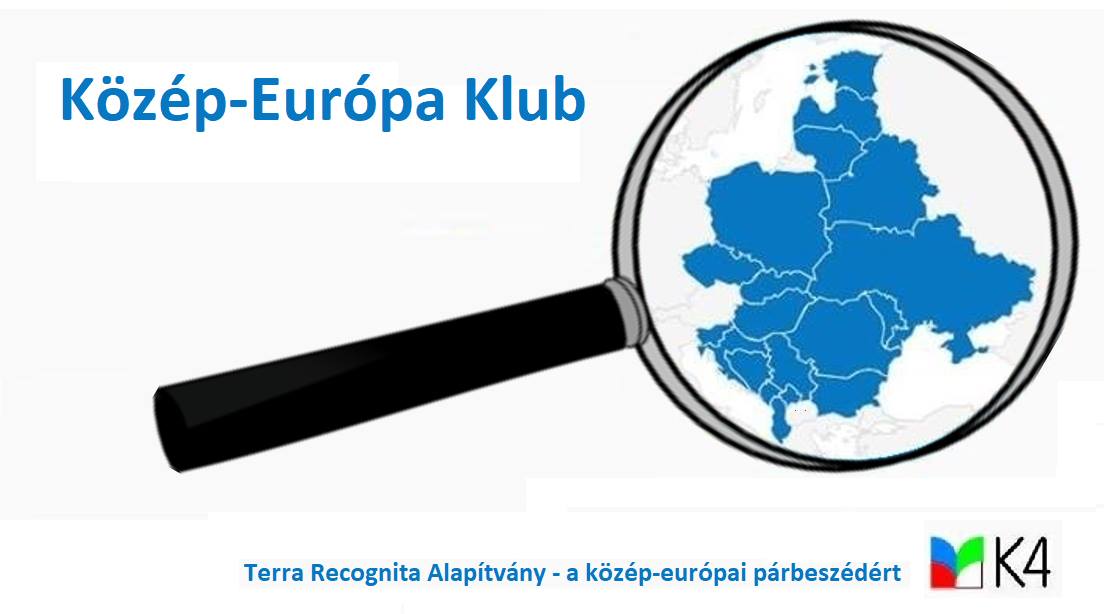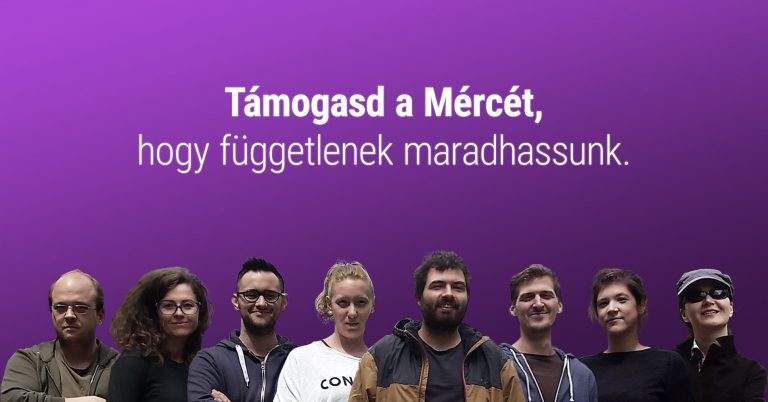 Is it possible in Hungary to operate media outlets only from crowdfunding? How can they get new readers, and is the Hungarian audience ready to pay for online contents? Raising our gaze further away, what Central European examples of new business models can be found, and how viable are they?
Is it possible in Hungary to operate media outlets only from crowdfunding? How can they get new readers, and is the Hungarian audience ready to pay for online contents? Raising our gaze further away, what Central European examples of new business models can be found, and how viable are they?
These and other similar questions were answered by journalists who gathered in Budapest at the first event of the Central Europe Club launched by Terra Recognita Foundation on April 15th. Behind the launch of the club there are two intentions: to bring together people interested in the region and to explore the most current issues of socio-economic transformation in the region.
The event with the title of ‘The bottom-up organized media: business and community building together?’ was moderated by István Kollai, assistant professor of the Corvinus University and coordinator of Terra Recognita Foundation. His discussion partners were Szilárd István Pap, editor of Mérce (Scale); Martin Bukovics, editor-in-chief of Azonnali (Instant) and István Dévényi, editor of Magyar Hang (Hungarian Voice). In this article, we look at the most essential topics of the discussion.
Community building and business development
In the introduction, all three participants explained how community building is linked to business development in their own lives. Szilárd István Pap unfolded that how Mérce became a left-wing workroom in 2014 from a blog operated by only a few journalists. The aim of the site was to convey the knowledge of people and activists working in different scientific fields. From the autumn of 2017, the portal is characterized by a more committed way of writing and, in parallel, has expanded their profile with news production. However, their real brand is live streaming, they participate in many demonstrations and broadcast them live to the public.
The Azonnali started in June 2017 with the collaboration of journalists who former worked for Mandiner, a Hungarian news portal. From June 2018, Péter Ungár, a member of the green Hungarian political party called Lehet Más a Politika owns the portal of Azonnali with a greater amount. According to Martin Bukovics this fact does not affect the content of the articles: they get a free hand in what and how to write.
István Dévényi, founder of Magyar Hang, emphasized that the foundation of the newspaper is basically the result of a forced situation. The journalists of Magyar Hang previously worked for Magyar Nemzet before the businessman, Lajos Simicska shut down the daily paper and news portal (meanwhile, the right winged Magyar Idők changed its name into Magyar Nemzet in 2019 February). The Magyar Hang operates with a classical financing model: they get money from the copies sold. With more than ten thousand copies, the Magyar Hang is in the TOP 3 of the current weekly market. It is a huge paradox that, on one hand, they are struggling every day for survival, but on the other hand, the journalists feel that this is the highest point of their professional career in terms of freedom of the press.
The situation of corporate advertisings
Corporate advertisings were first mentioned as one of the traditional models of financing journalism in Hungary. The journalist of Magyar Hang said that Heti Válasz, that earlier received significant government support, would have been able to survive only from advertisements. Then the political break-up of Orbán and Simicska (who was the owner of a media empire) has completely overwritten the situation of the Hungarian media market, resulting in a rapid decline of advertisers. Ákos Gergely Balogh, founder of Mandiner, who was in the crowd of the audience, has highlighted that typically not the companies, but their agencies advertise, and they have well-tried connections.
 The editor-in-chief of Azonnali argued that the support of the agencies can be won, and the mediums need to be more persistent. They have several corporation ads, for example they get such revenue from Dacia last year. At the same time, it is not negligible that there is a financially strong investor behind them, which means that they can employ 8-9 permanent people.
The editor-in-chief of Azonnali argued that the support of the agencies can be won, and the mediums need to be more persistent. They have several corporation ads, for example they get such revenue from Dacia last year. At the same time, it is not negligible that there is a financially strong investor behind them, which means that they can employ 8-9 permanent people.
The Mérce is quite different in the case of advertisements: they have always come to the conclusion that they do not allow the placement of advertisements on their portal. They are of the opinion that only crowdfunding can give true freedom against the expectations came from the potential investors. From a global view, he believes, advertisements as a business model is not pointed towards long-term sustainability, and compare their model to The Guardian, which also targets its readership with their sponsorship campaign.
What kind of articles does the audience need?
According to Bukovics, one of the most progressive mediums in the region is the Romanian Recorder, that works with tremendous staff and produce videos in English that have millions of views. Although the Romanian market is undoubtedly bigger, therefore there are more optional press products and the credibility is greater as well. Azonnali would like to move into the direction of Recorder in the near future.
At the same time, the editor of the Magyar Hang stressed that the future is not just the online contents. He also sees that the ‘audience in the middle’ imagined by many journalists does not exist in practice. Most of the people want to struggle on their own public side for their favorite media, and there are distortions in Hungary that are very difficult to overcome.
According to Bukovics, there is still a middle, and for example he mentioned one of the most read articles of Azonnali, where they introduced both governmental and oppositional statements connected to a recent modification of the Hungarian labour code, and also examined how they are related to the actual written text of the law . According to Dévényi from Magyar Hang, there can be exceptions, but these cannot be set up as a working model.
Would the audience be willing to pay for online contents?
The moderator drew up this issue with a Slovak example, where a significance amount of the online news media made their contents available behind a national paywall in 2011. According to him, a similar idea came up in Hungary around 2012, which then fell partly on the resistance of Index, the biggest Hungarian news portal. Would it be possible now to have such kind of cooperation between the Hungarian mediums?
 A question arose immediately: for what exactly should be paid, for all the media or just one medium, perhaps could the users choose their own portfolios? The 444 (another popular Hungarian news portal) will soon implement a subscription model that everyone is waiting for with intense curiosity. The Válasz Online operates with different support levels, and according to the monthly rate of support, someone can be a bronze, silver or gold sponsor (the Direkt36 investigative portal operates in a similar way). The model of Élet és Irodalom (a weekly that covers literary and public life, also as an online portal) is unique in the Hungarian market: readers have to watch advertisements before each article, but since the articles cannot be shared, they can have only a limited audience.
A question arose immediately: for what exactly should be paid, for all the media or just one medium, perhaps could the users choose their own portfolios? The 444 (another popular Hungarian news portal) will soon implement a subscription model that everyone is waiting for with intense curiosity. The Válasz Online operates with different support levels, and according to the monthly rate of support, someone can be a bronze, silver or gold sponsor (the Direkt36 investigative portal operates in a similar way). The model of Élet és Irodalom (a weekly that covers literary and public life, also as an online portal) is unique in the Hungarian market: readers have to watch advertisements before each article, but since the articles cannot be shared, they can have only a limited audience.
According to Pap from Mérce, if the subscription market meant just the non-governmental media, it would be a very unequal situation: readers might not subscribe if they could get the contents for free from the governmental media. By the way, the model has not been successful in Slovakia: the major stakeholders have gradually stepped out of it, seeking greater flexibility.
Connected to the survey of the Reuters Institute and the University of Oxford, Pap pointed out that there is a greater number of potential sponsors than the actual subscribers. This also means that there is still potential for growth, according to him, even in Hungary. His opinion is that, the right to information is the same for everyone, so he would not work for a medium that makes some of their contents available only for subscribers.
The future of European news media
The last topic was whether the public will be still so fragmented ten years later, moreover will the small, quick editorials or the dominant mediums win? The participants believe this is depended largely on politics.
According to the editor of the Magyar Hang, the small, flexible newsrooms seem to be more sustainable. Pap from Mérce mentioned his favorite Western press product, The Intercept. One of the editors of the portal left The Guardian for this sustainable online news portal. He argued that the press needs capital and the capital is basically not here, so he does not think that this kind of fragmentation would change in the foreseeable future.
At the end of the round table discussion, Dévényi from Magyar Hang highlighted the problem that in the case of Hungarian community funding, we can probably talk about the same group of the audience as supporters for each medium. This is by no means sustainable in the long run.
Featured image: Terra Recognita Foundation (from the Facebook event)
Photo: former site of Mérce
Coins: Pixabay